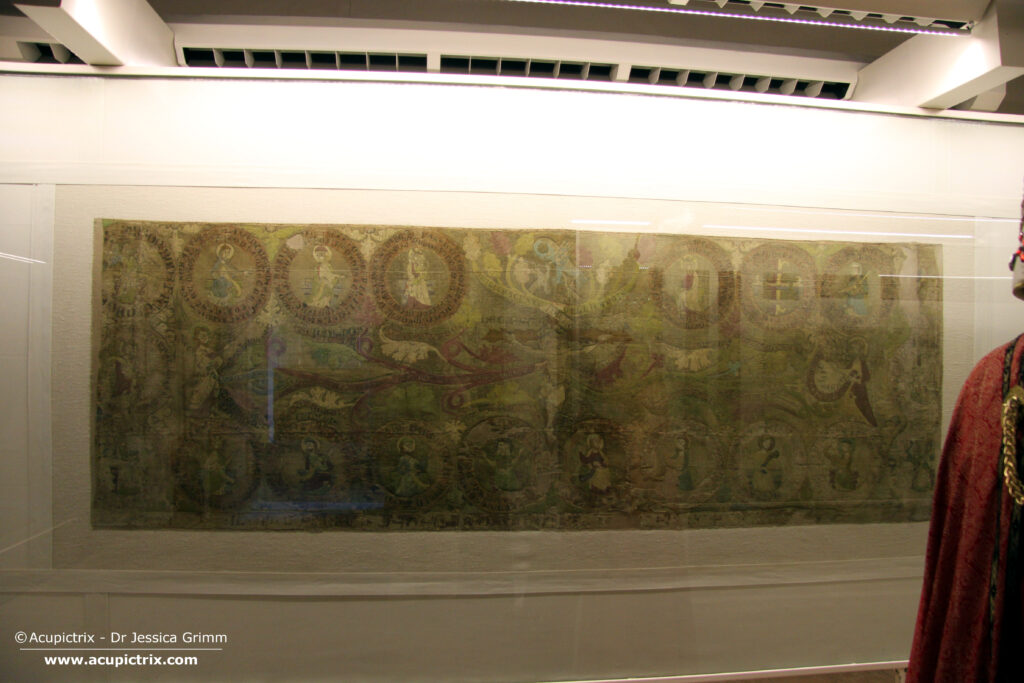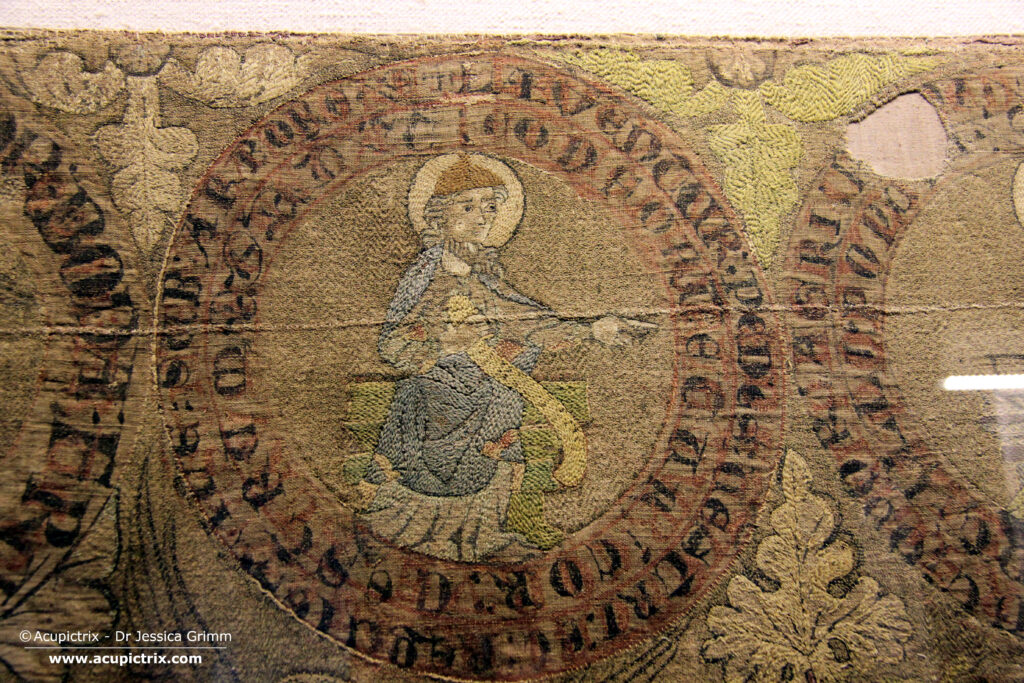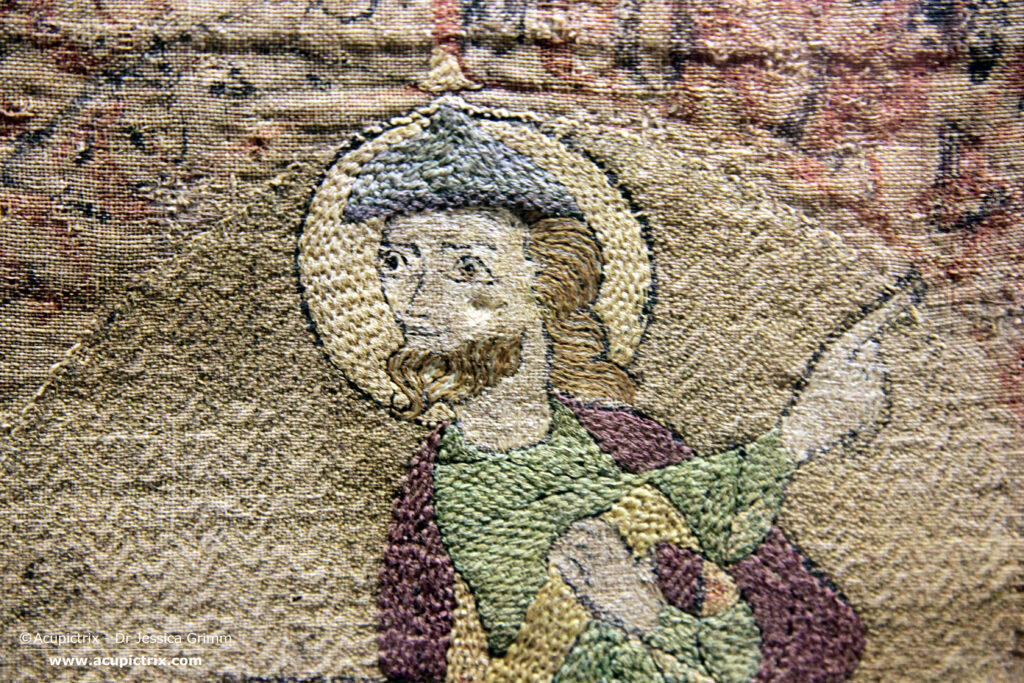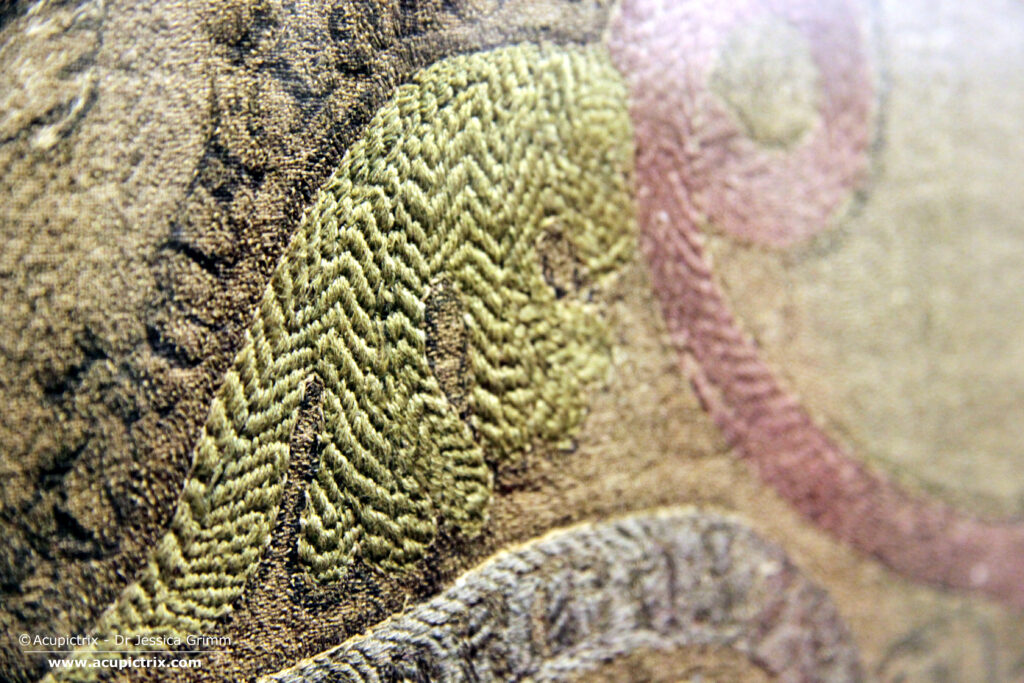Over the past couple of weeks, we have explored several pieces of medieval goldwork embroidery housed in the Cathedral Treasury of Anagni, Italy. Around AD 1300, Pope Boniface VIII gifted his hometown Cathedral spectacular Opus anglicanum, Opus cyprense and Opus romanum paraments. He also gave a beautifully embroidered antependium. Unfortunately, there’s no record of where it came from. It differs in style from the three known ‘opera’ styles present. This piece of medieval goldwork embroidery is simply attributed to ‘North of the Alps’ by modern art historians. Let’s see what we are dealing with.

The medieval goldwork embroidery antependium from North of the Alps kept at Anagni Cathedral dates to the late 13th century. At its centre, it features the Crucifixion on an arbor vitae, or a living tree. The scene is surrounded by 20 medallions filled with saints, prophets and Old Testament kings. Each medallion features a text from the Vulgata (sometimes added by a commentary). These texts explain the Crucifixion. This is underlined by most of the figures pointing towards the Crucifixion scene in the centre.

What is particularly interesting about this medieval goldwork embroidery is that we can see the design drawings. Yes, that’s plural. As you can see in the above picture, there’s a drawing in black ink and a drawing in red ink. It seems that the red drawing is the correction that the embroiderers followed. And yes, that’s plural too. More on that later. As the lettering in the underdrawings uses different versions of some letters, we can even say that there were at least two draughtspeople involved in transferring the design.

The medieval goldwork embroidery itself is also rather unique. The silk embroidery of the faces and the hair follows the technical ideas seen in Opus anglicanum. The directional split stitch is used to create flowing hairstyles. Not so Opus anglicanum is the treatment of the golden backgrounds. They are made with simple surface couching in a chevron pattern. We already saw this technique in the Opus cyprense and Opus romanum pieces. The rest of the silk embroidery is truly unique and not seen in any of the other ‘opera’. The silken areas consist of couched flat silk. In the picture above, the couching pattern appears to be slightly irregular. It forms slanting lines in the green undergarment and a bricking pattern in the purple mantle. Shading, as seen in Opus anglicanum and Opus romanum is also absent. Each design area is filled with a solid colour of silk.

Remember the plural in embroiderers? The design is symmetrical. You would expect that the couching patterns in the silk embroidery are symmetrical, too. This is not the case. One side shows leaves mainly couched with the bricking pattern and the other side shows leaves mainly couched with a chevron pattern (picture above). It is thus likely that more than one embroiderer worked on this elaborate piece of medieval goldwork embroidery. It was clearly not necessary that the whole piece looked like as if it were made by one hand.
Literature
Elster, C., 2018. Die textilen Geschenke Papst Bonifaz’ VIII. (1294-1303) and die Kathedrale von Anagni: Päpstliche Paramente des späten Mittelalters als Medien der Repräsentation, Gaben und Erinnerungsträger. Michael Imhof Verlag, Petersberg.
